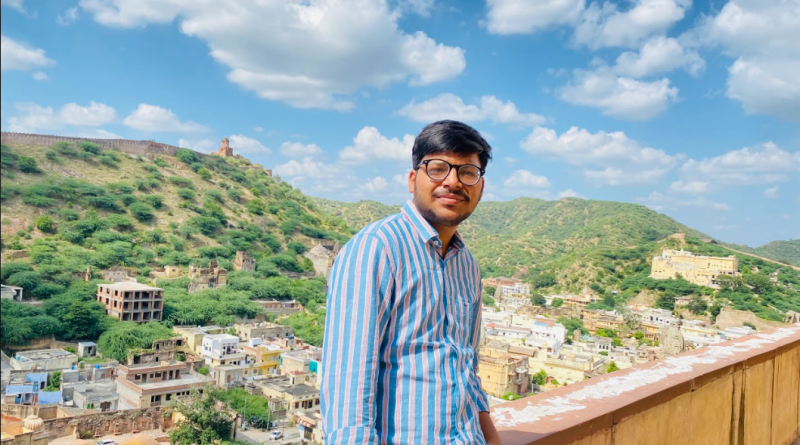Internship at People for Animals – The call of wildlife

About the Author: Shamantha Manogaran, a student of St. Joseph’s College, shares her adorable journey with rehabilitated animals and her varied memories.
Driving along deserted, sparsely lit roads in the middle of the night, I reached the 6-acre campus of People for Animals (PFA) on account of the sudden demise of my pet. A skeleton staff was ready to help me with a respectful burial for my dog. What was revealed as a 24/7 pet cemetery by Google was, in fact, a wildlife hospital and rehabilitation center. I returned home but was still intrigued by the photos of wildlife that hung on the wall of the organisation, so I called them and was informed that they were open to interns and volunteers, and I could drop by any day. Standing in the campus in broad daylight awed me – an expanse of trees covered various enclosures and a one-storey office block while a marble path led to the rehab enclosures, ICU, and cemeteries. The selection criteria were the willingness to work towards the betterment of urban wildlife coupled with an enthusiasm for learning. While basic zoological knowledge was appreciated, the interns could have any educational background as long as they were compassionate towards the animals. I filled out a registration form covering my personal details and areas of interest based on which tasks were assigned to me during my tenure. A specific period of attendance and enthusiasm was required before an intern was allowed to interact with animals. My internship profile was pretty flexible. A rescuer showed me around the campus. Watching kites and monkeys recuperating close to parakeets and mottled wood owls was breathtaking and the vets, rehabilitators, ground staff, and admin inspired me with their love for animals.
During the three months of my internship, I assisted the veterinarians and rehabilitators with various tasks like enriching the enclosures, painting fences and cages, and collecting grass for herbivores. The initial week was spent cleaning out the mammal enclosure which was to house a jungle cat. I assisted the kitchen staff with the rationing of food for each enclosure and the ICU, provided insights for the press-releases, and accompanied the rescuer on duty. As familiarity grew, I was asked to provide assistance for workshops and to lead groups around the shelter. I hand fed the animals under the supervision of rehabilitators and assisted the vets in the treatment of injured animals. I also worked with the outreach department and helped with handling stalls at an event held outside the shelter.
At PFA, the specific ecological niche provided to each inhabitant was replicated as closely as possible to its natural habitat. There was a wide range of animals including a jungle cat, pond herons, night herons, bats, owlets, slender lorises, hares, etc. I was taught about the habits, habitats, behaviours, and characteristics of the species along with their diets. This was a cyclic method of learning from understanding the habitats and studying the animals to designing the required rehabilitation enclosure. I learnt to handle animals under expert supervision. Each species had a different way of being handled, for instance, kites required a towel while being handled to prevent clawing, parakeets were keenly observed to prevent biting or gnawing, and squirrels required hand feeding. I also learnt the significance of keeping the campus and enclosures clean and that of social events like the outreach and awareness programs.
Within two weeks of my internship, I was allowed into the heart of the shelter – the ICU, where injured animals were treated. I worked there with the assistant vet whose enthusiasm motivated me to work better. While I had a plethora of learning and innumerable memories, the joy of participating in the release of successfully healed and rehabilitated animals was unparalleled. I constantly bombarded the staff with my questions, and they taught me more than any textbook ever could. In two months, I went from ‘Umm….is that a passerine bird?’ to ‘That’s probably a Purple-Rumped Sunbird, judging by coloration’. The most eventful time of my day was when I would enter the recovery enclosure every day with Dr. M to be attacked by hungry baby monkeys as we placed the feeding bowls and poured the formula. I generally fed baby squirrels, juvenile tailorbirds, and terrapins. I also fed a black-headed ibis with a fractured wing which seemed quite interesting. I once went to see a giant wood spider with the outreach coordinator, who is an avid bird-watcher, followed by an hour of photography which included sighting jungle babblers, red-whiskered bulbuls, and Tickell’s blue flycatcher.
Of all the animals, the memory of a baby monkey brought in a pink basket would stay with me forever. The rescuer told us that it would put out a tiny paw at the sound of traffic. When he opened the basket, the monkey clung onto the rehabilitator meekly. This was the most touching scene I had ever witnessed. There was also an incident when an Ashy Prinia flew out of its cage and fluttered through the bars of a barn owl cage. My heart was on a roller coaster till it was put back into its cage. Another exhilarating incident was a snake rescue. I set off on a scooter with the rescuer in heavy rains and reached our destination. We were directed to a large compound with a number of small shacks where two snakes were hidden under a pile of building material. The people moved the material and the rescuer caught the snake who writhed upwards trying to flee. We bagged the other snake as well after an hour of retaliation. We also rescued a juvenile cobra – an adorable 12-inch creature with sparkling eyes and a miniature hood – from a bucket and put it into a glass bottle. We released them in the Turahalli forest.
People for Animals left as much a mark on my life as on the animals. A.A. Milne said, ‘Some people talk to animals. Not many listen though. That’s the problem.’ At PFA, however, we not only listened but also answered the needs of Bangalore’s urban wildlife.
Do you also want a thrilling experience? Check out these social work internships.
Editor’s note – If you also have an interesting story to share, you can now participate in Your Internship Story Contest 2017 and win cash prizes and goodies worth INR 1 Lac!



